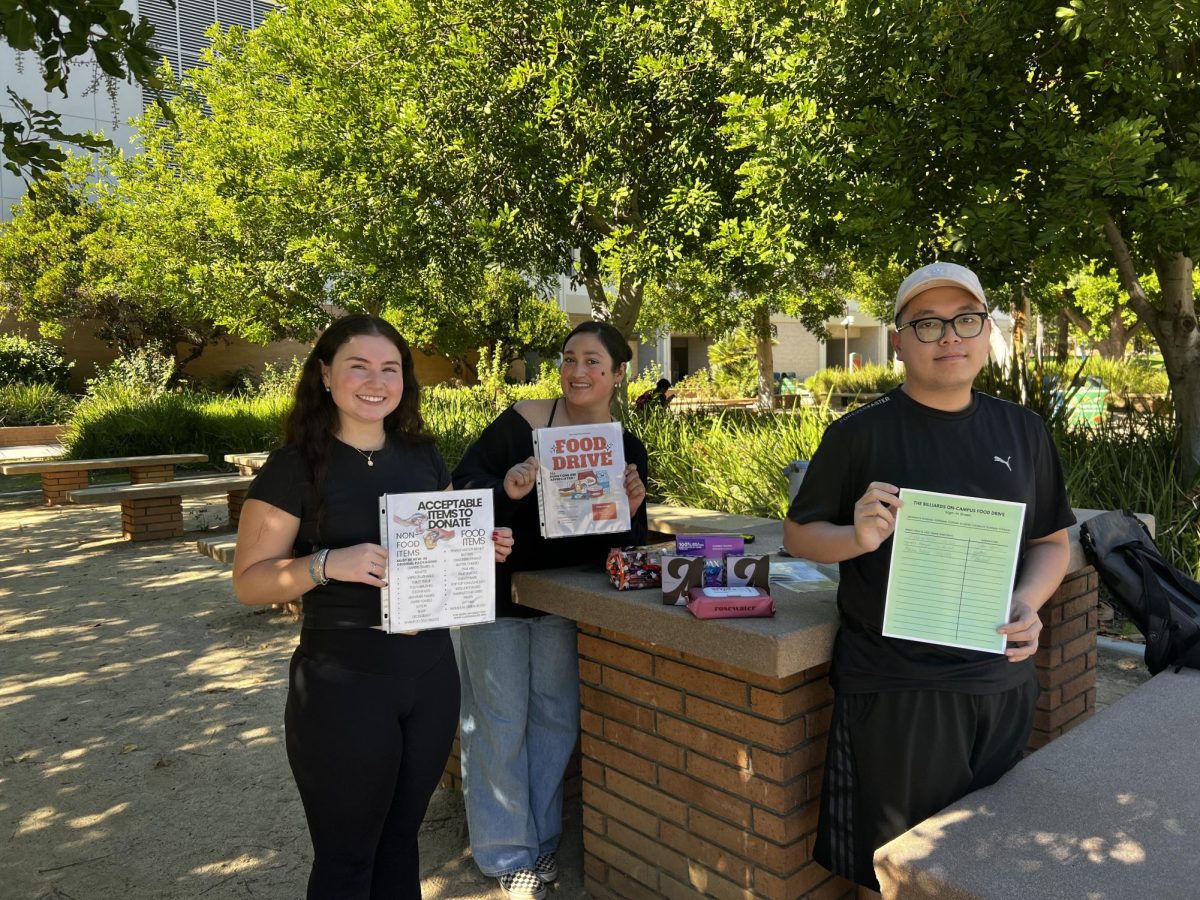Hydraulic fracturing, also known as fracking, in California uses large amounts of water in order to extract pockets of natural gas from shale deposits, causing concern amid the current drought conditions.
A report by the U.S. Geological Survey in 2008 estimated that natural gas drilling uses up to three million gallons of water per treatment and that it has raised questions about the safety, sustainability and transportation costs in the fracking industry.
“Drilling requires large amounts of water to create a circulating mud that cools the bit and carries the rock cuttings out of the borehole,” the report stated. “Under drought conditions, or in locations with already stressed water supplies, obtaining the millions of gallons needed for a shale gas well could be problematic.”
Fracking in California may actually use less water than it does nationwide, said Kent Hymel, CSUN professor of economics who has studied fracking as part of his environmental economics research.
“The geology in California is different than say in North Dakota or the east coast, so the technique they use to extract it is different,” Hymel said. “Elsewhere, they have to use a lot of water for fracking, but in California less so. They still have to use water, but not in the same quantities.”
Because of the public concern, many fracking companies have begun to recycle the water they use, Hymel said. Recycling also drives down production costs, creating incentives for companies to clean up and be more efficient in their practices.
“It’s hard to get rid of because it’s toxic, so they figured out ways to reuse it so they don’t have to dump the water somewhere or treat it, which is expensive and dangerous,” Hymel said. “The technology is changing. They don’t want to cause any environmental concerns and the environmental regulations are much stricter here than elsewhere, so it hasn’t caused any major problems.”
The natural gas industry in California has not seen as much growth in production in recent months, Hymel said. Existing wells are still producing, driving prices lower and maintaining a constant supply of natural gas.
“If the water disappears, no industry is going to be able to use it,” Hymel said. “If we continue in the drought, no industry that is water-dependent is going to continue to grow.”
The drought poses important questions for the fracking industry, said mathematics professor Maria-Rita D’orsogna, who teaches a sustainability class and worked on environmental impact statement reports and analyses when her home town in Italy was considering natural gas drilling.
“We know it’s a very intensive process when it comes to water consumption, so why is there not a larger debate about the use of water for this process?” D’orsogna said. “Not only a lot of water is used, the water that comes out as a result of this process is highly polluted. To me, it’s just not a very intelligent way of using our resources and not very respectful of future generations.”
Though she said she approves of efforts to recycle and reduce water consumption, D’orsogna feels they do not address all of the environmental concerns of natural gas production.
“All these new ideas are all very tentative and by the time this all gets put into practice, there is kind of a long way to go,” D’orsogna said. “Even if that were the case, I think that the amounts of water used are so large… I don’t see how this equation can ever be balanced.”
Water shortage in California would not change fuel prices state or nationwide because prices are more affected by current environmental regulations than they would be by the drought, Hymel said. Oil and gas extraction will not be subject to the same restrictions implemented by Governor Jerry Brown as residential and agricultural water sources.
“It’s a global market for these things, so even though California is a huge state, it wouldn’t have a huge impact on price by itself,” Hymel said. “The industry kind of exploded. It grew faster than regulators could keep up with it.”
Both Hymel and D’orsogna said they believe the state should be doing more to implement renewable energy sources to encourage environmental sustainability.
“I think that it should be a concerted effort and everyone should be asked to cut back as much as we can,” D’orsogna said. “This is not a short-term problem. We need water to drink, we need water for our lives. We could do without fracking in this state. That, to me, is water that is wasted.”










